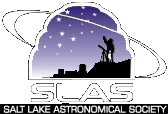|
BEFORE YOU BUY
Read: Recommended magazines include
Astronomy, an introductory-level publication, and Sky & Telescope. Both contain
monthly star charts.
Study: Find out more about the
origins of the solar system or the distance between planets. "If that doesn't
fire you up, you probably don't want a telescope," says Bob Tillotson of the
Ogden Astronomical Society.
Identify: Learn how to read a
star chart and spot various objects in the sky. Sure, you know the Big and
Little Dippers, but where's Vega or Antares? Visit. Hang out at a few star
parties or visit astronomy club meetings. Both are good ways to increase
knowledge of the sky and find out more about different types of telescopes. Some
clubs even have telescope loan programs.
Look: Start
scanning the skies with a pair of binoculars, recommended by many experts as the
best "first telescope."
WHEN YOU BUY
Make a selection: If you're
interested in stargazing, you need an astronomical telescope. Terrestrial or
spotting scopes are designed for looking at Earth-bound objects.
Know the aperture:
Get as wide an
aperture, or opening, as you can afford. A 6- to 10-inch diameter is
recommended. This measurement is the diameter of the primary mirror or lens, not
the tube of the telescope.
Know the mount: Make sure the
telescope connects solidly with the tripod -- no wiggles or vibrations. The
scope should scan steadily and smoothly.
Know the type: Reflecting telescopes
are good for beginners, particularly the simple Dobsonian style (named for
inventor John Dobson, a monk). "Dobs" are easy to set up and provide quality
optics and sturdy mounts.
Watch the magnification: Steer clear
of telescopes touting excessive magnification, such as 600 power. Astronomy
buffs rarely use such high powers. The magnification of any scope can be changed
by adding eyepieces.
Consider the price. Expect to spend
$400-$500 for a quality telescope. Most cheaper scopes don't give a budding Carl Sagan -- or an ordinary adult or child -- much to look at.
Keep learning. Once you have a
telescope, take it along and visit more star parties. Folks there can show you
how to set up the scope and how to use it.
|

![]()